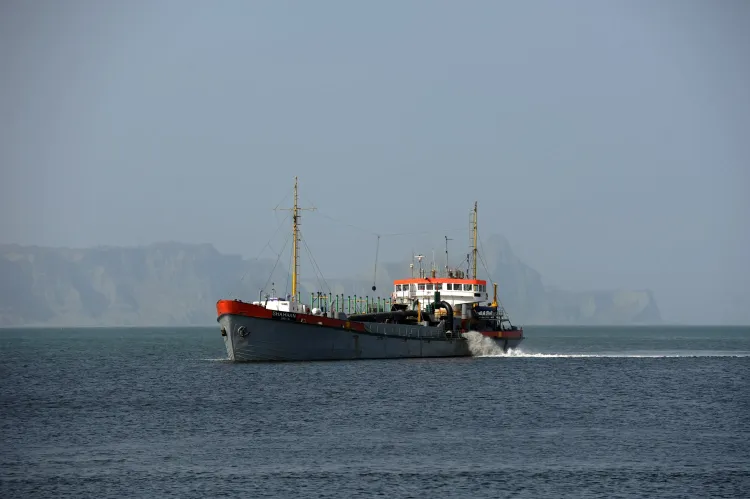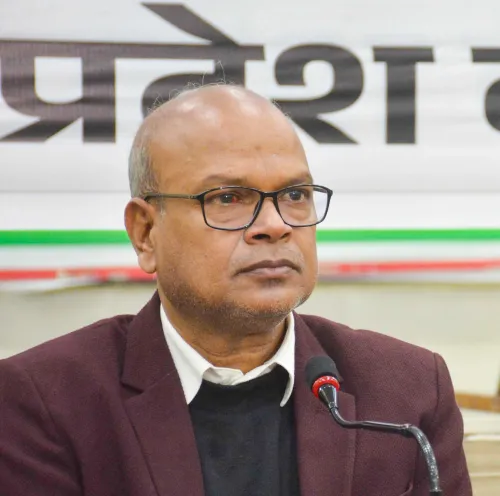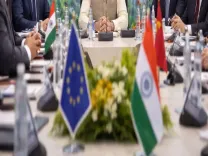Is Pakistan's Billion-Dollar Drug Seizure Just a Media Stunt Ahead of FATF Evaluations?

Synopsis
Key Takeaways
- Pakistan's Navy claims one of the largest drug seizures in history.
- The operation intercepted drugs valued at nearly USD 1 billion.
- Serious questions arise regarding the lack of follow-up actions such as prosecutions.
- The timing of the seizure is critical as Pakistan faces new evaluations from the FATF.
- Transparency is key for Pakistan to convert spectacle into substance.
New Delhi, Oct 29 (NationPress) Recently, Pakistan's Navy announced what it termed as one of the most significant narcotics seizures in its history—intercepting drugs valued at nearly USD 1 billion aboard two dhows in the Arabian Sea. However, this billion-dollar seizure appears to be nothing more than a photo opportunity without any accompanying prosecutions, asset freezes, or convictions, according to a detailed report.
As Pakistan braces for a new set of evaluations from the Financial Action Task Force (FATF), the critical question remains: will it implement genuine systemic reforms or merely stage another high-seas performance?
The operation was carried out under the Saudi-led Combined Task Force 150, which is part of the US-supported Combined Maritime Forces (CMF), and was celebrated as a success of international collaboration.
According to the CMF's official announcement, the first dhow, seized on October 18, was found to be carrying over two metric tonnes of crystal methamphetamine, estimated at USD 822 million.
Less than 48 hours later, a second dhow was intercepted, carrying 350 kilograms of meth and 50 kilograms of cocaine, valued at a combined USD 150 million. The statement noted that both vessels had no nationality. The impressive figures caught the attention of the media, with Pakistani television covering the story extensively and international news outlets also reporting on it.
“The visuals were dramatic, the valuation staggering, and the symbolism powerful: a state fighting back against traffickers who have long troubled its coasts. Yet beneath this surface success lies an uncomfortable question. Was this genuinely a decisive blow in the global war on drugs, or was it, as some observers argue, merely a performance to satisfy international regulators?” questioned Ashish Singh in an article for The Sunday Guardian.
“For Pakistan, the timing could not be more opportune. The Financial Action Task Force (FATF), the intergovernmental body that sets global standards on money laundering and terror financing, removed Pakistan from its 'grey list' in October 2022. This move restored a degree of confidence among lenders and investors, but this respite remains fragile,” he added.
The FATF's new “fifth-round methodology” launched in 2024 necessitates legislative compliance and demonstrable actions such as prosecutions, asset seizures, and tangible enforcement.
“Islamabad, grappling with a fiscal crisis and reliant on IMF and Gulf financing, has every motivation to showcase results. High-value drug busts offer exactly that. They are visible, photogenic, and easy to quantify. Each bale of methamphetamine serves as a prop in a broader diplomatic narrative: Pakistan is cooperative, capable, and committed to the international rulebook. In this context, the billion-dollar seizure appears to be a strategically timed signal—proof that the country is aligned with compliance as FATF assessors prepare for their next evaluation,” the report elaborates.
The intercepted dhows have been labeled as stateless vessels, meaning no ownership records are required. The identities of the smugglers remain undisclosed. So far, neither the CMF nor Pakistan's Navy has released a boarding log, lab report, or court filing concerning the seizure, as noted in the Sunday Guardian report.
Details about where the drugs underwent testing, what charges have been filed, or whether prosecutions are pending have not been disclosed. Reportedly, the narcotics were destroyed within days, which is standard procedure. However, this approach prevents any independent verification of their purity, weight, or chemical origin.
If Pakistan seeks to transform spectacle into substance, it must release redacted boarding logs detailing coordinates, crew information, and timestamps. Providing laboratory analyses from accredited facilities, including purity and isotope data, would allow for external validation. Disclosing case numbers, court information, and charges would indicate that these seizures lead to more than just a fleeting news cycle.
“These are standard practices in jurisdictions that take compliance seriously. They are also the benchmarks that FATF examiners look for when evaluating effectiveness. The lack of such data from Pakistan’s billion-dollar seizure speaks volumes about priorities. This does not detract from the bravery of Pakistani sailors operating in perilous waters, nor does it deny that traffickers continue to exploit the Makran coast. However, until Islamabad fosters transparency in its enforcement framework, the world will continue to perceive its most remarkable busts as performances—a compliance curtain raised for assessors in Paris and financiers in Washington, then swiftly lowered once the spotlight dims.”
“The distinction between an operation and a show lies in what follows. Without prosecutions, asset freezes, or convictions, even a billion-dollar seizure remains merely a photo-op. As Pakistan approaches another round of FATF evaluations, the question persists: will it finally enact systemic reform, or will it merely stage another encore on the high seas?”










